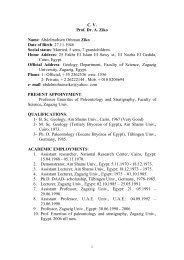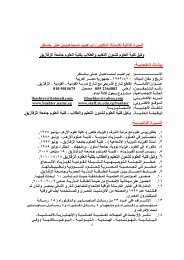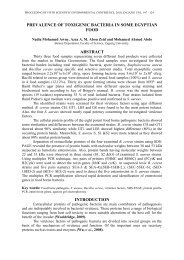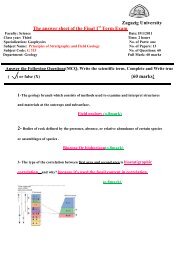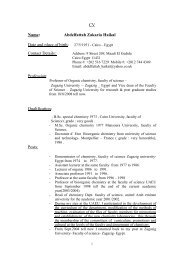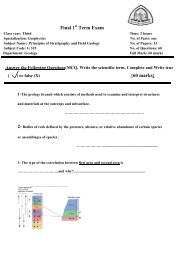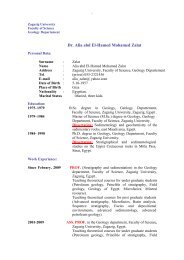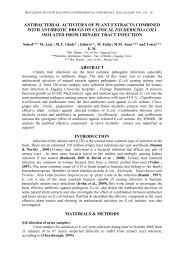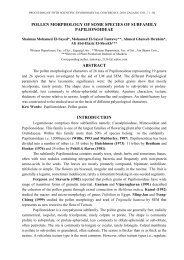flood hazard betwee marsa alam - ras ba as, red sea, egypt abstract ...
flood hazard betwee marsa alam - ras ba as, red sea, egypt abstract ...
flood hazard betwee marsa alam - ras ba as, red sea, egypt abstract ...
You also want an ePaper? Increase the reach of your titles
YUMPU automatically turns print PDFs into web optimized ePapers that Google loves.
20M. A. AzabFig. (2) Topography of the study area (<strong>ba</strong>sed on Egyptian MilitarySurvey topographic map 1986 at scale (1 : 250000).Geomorphic Characteristics of the Plio-Quaternary Alluvial Fans:From north to south, there are six major fans in the study area: Samadi, Nakari, Khalilate EIBahri, Rimarim, Kh<strong>as</strong>hir and R<strong>as</strong> Ban<strong>as</strong>. They range in area <strong>betwee</strong>n 10km 2 (Khalilate EIBahri) and 190km 2 (Kh<strong>as</strong>hir), and their altitudes range <strong>betwee</strong>n 79m a.s.l (Khalilate El Bahri)and 172m a.s.l (Nakari). The lower limit of the studied fans varies from 6.0 m a.s.1 (WadiSamadi) to 10.0m a.s.l (Wadi Rimarim). The apex of fan area are arranged adjacent to alongthe main faulted boundary extending at the mountain front h<strong>as</strong> relatively higher slope. Itvaries from 5° (Wadi Rimarim) to 16° (Wadi Nakari). The middle fan are<strong>as</strong> one of gentleinclination, and varies from 3° at Wadi Gemal and R<strong>as</strong> Ban<strong>as</strong> to 8° at Khalilate EI Bahri. Thelower fan h<strong>as</strong> a slope of less than 2°.These fans are drained by number of channels originating from the high relief mountain.These channels are generally parallel at the lower and middle parts of the fan zone. They arehigher dissected and have deep gullies in their lower parts. Most extensive terraces withdifferent levels are developed around the channels of these fans.Drainage CharacteristicsThe study area represents a part of the Red Sea drainage submega<strong>ba</strong>sin (El Shazly et al.1991). The water divide follows the high peaks of the Red Sea Mountains. It is crooked andtrends roughly in a NNW direction parallel to the regional trend of the Red Sea. The finalshaping of the drainage network is an outcome of the l<strong>as</strong>t fluvial periods. The present dryvalleys and tributaries were already engraved during these fluvial periods. They are now filledwith surficial deposits of gravels, sands and clays. Twenty three drainage <strong>ba</strong>sins with outletsto the Red Sea were defined and sorted out, area-wise into three distinct categories (large>



